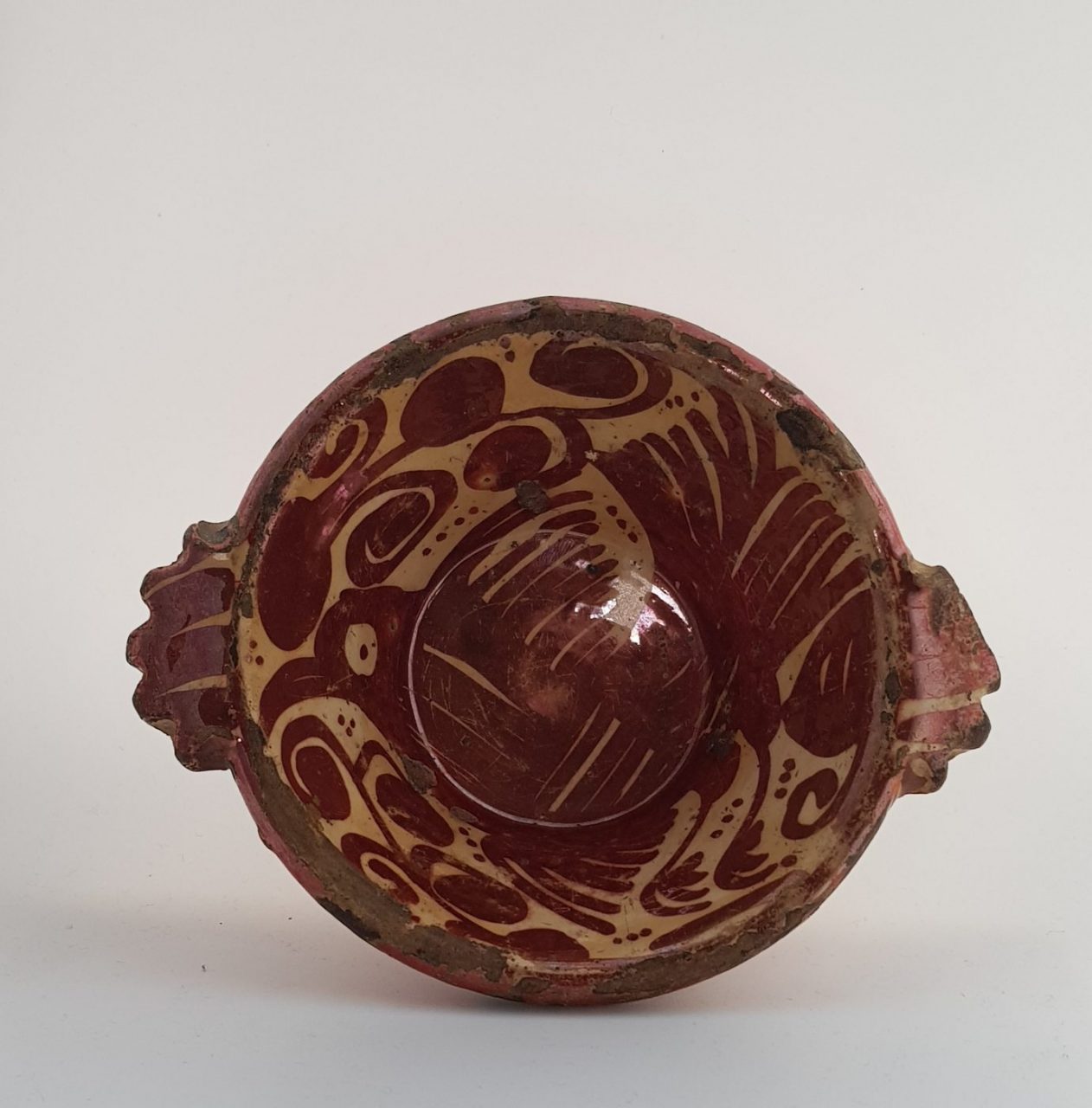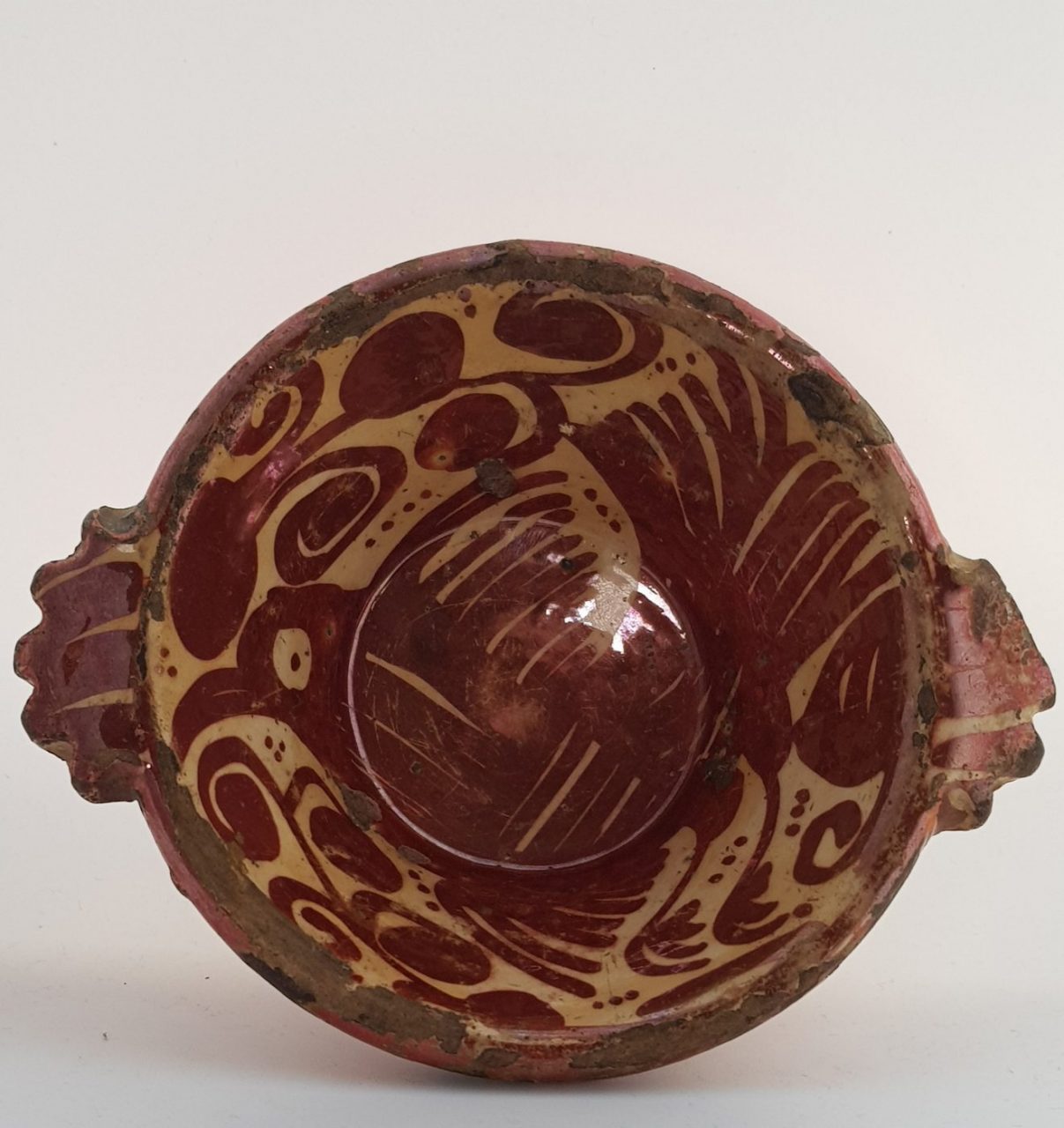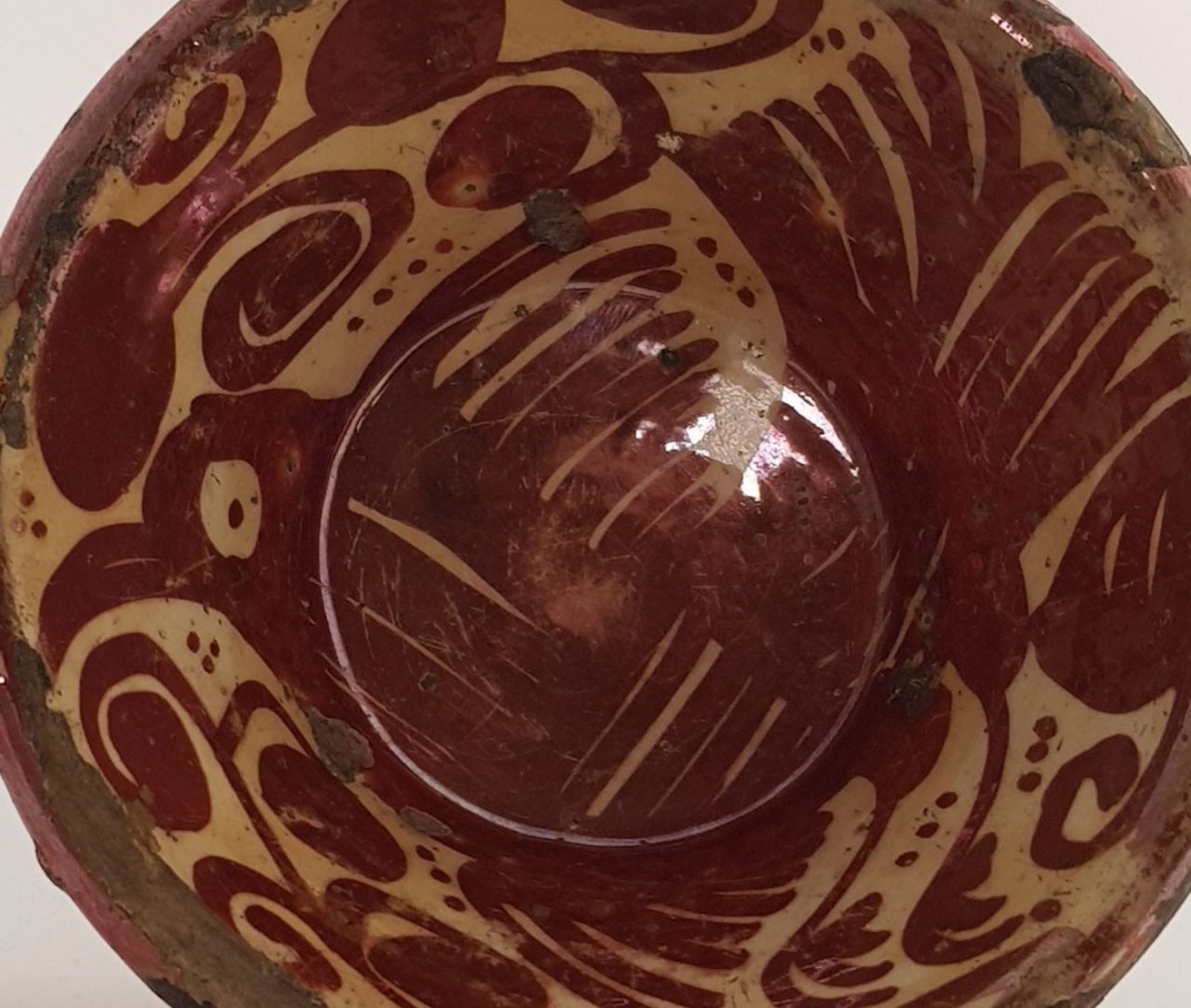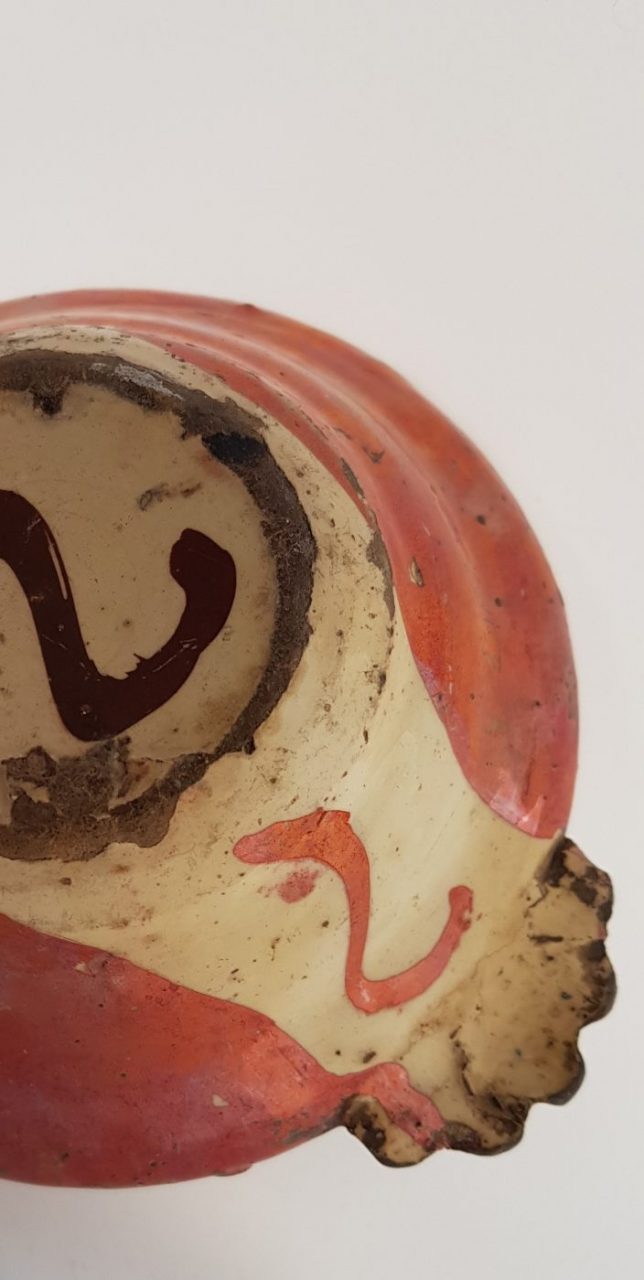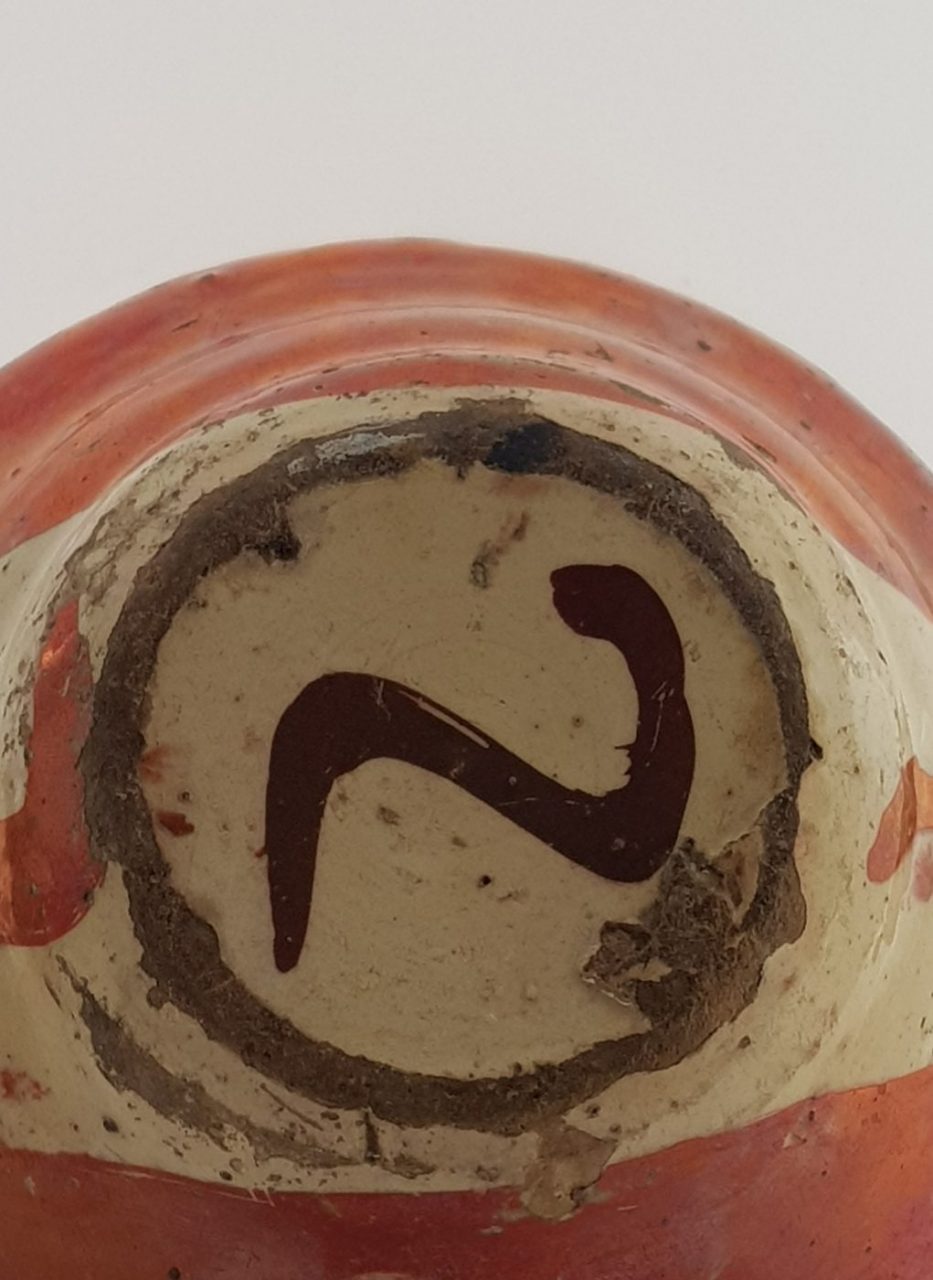-
- Stock
- »
- Archived
Spanish Scudella
Reference
HA0068
Price
Sold
Origin / Age
Manises, Spain : Late 17th Century
Dimensions
13.5cm d x 6cm h
A charming Hispano-Moresque 'escudilla' , which translates as bowl , depicting the pardalot bird against stylised foliage background . It is tin glazed earthenware with an extremely strong lustre decoration particularly notable to the reverse of the piece.Details
Tin-glazed earthenware was developed in the Middle East in the ninth and tenth centuries to imitate the porcelains produced in China. The opaque white glaze concealed the clay body, which could range from pale buff to brick red, allowing for brilliant effects created by painting the white surface with metal oxides that fired to a range of colours. This technique, as well as the use of metallic luster—an iridescent, coppery painted glaze—spread throughout the Muslim world, arriving among the potters of Valencia in the thirteenth century. The so-called Hispano-Moresque lustreware, with its mix of Islamic and Gothic styles and motifs, often shaped to imitate metal vessels, was treasured by the elite in Spain during the fifteenth century and exported to the courts of Europe. The Valencian industry declined in the late sixteenth century, as colourful Italian Renaissance maiolica gained in popularity among the fashionable and as Spanish centers were founded to produce their own. Adding to this decline was the expulsion from Valencia in 1609 of all the remaining Moriscos (Muslims converted to Christianity), though Christian potters re-established the industry shortly thereafter.
Condition: Chip to handle , wear as seen throughout.
Please note: Price does NOT include delivery costs.
-
